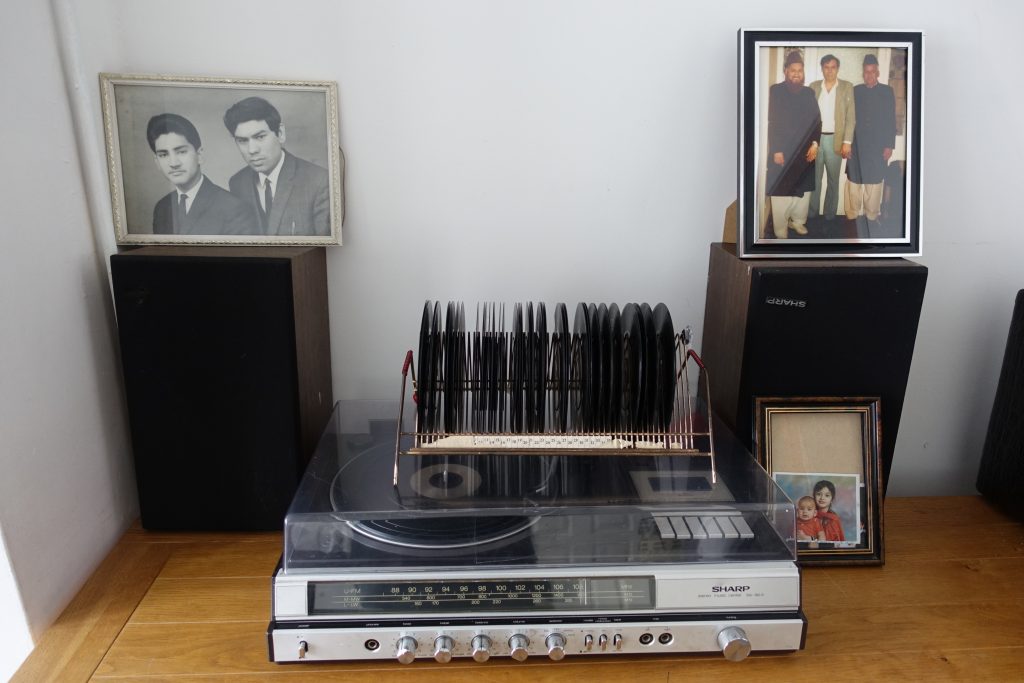Background

Background
Cassette tapes were originally developed by the Dutch technology company Phillips in 1963 for dictation machines, but with rapid improvements in audio fidelity, they became hugely popular as a format for pre-recorded music. They were also available as ‘blank’ tapes, which allowed for personalised home recordings of music (whether that was from the owner’s records or music from the radio). This spawned ‘mixtape’ culture, and a subsequent alarmist reaction by the music industry (a standout slogan being “Home Taping is Killing Music”). This home recording functionality of cassette recorders prompted many members of the British-Pakistani community to also use them as an audio messaging system to communicate with their relatives abroad. Tapes were relatively cheap, re-recordable, and in many instances provided a solution to problems with literacy, in particular for many women from a lower socio-economic background who were unable to read or write letters that would have been penned in Urdu. Cassettes allowed them to record messages in their own Potwari language, allowing for their voices to be heard directly and literally.
Messages were recorded on a variety of tape lengths (the most commonly used being the ‘C60’ allowing 30 minutes of audio to be recorded per side) and the cassettes were sent between families either via the postal system or in the relatively rare instances when a family member or trusted friend would be visiting from abroad, they would be delivered by hand. Cassettes would be listened to individually or collectively by the intended receivers, with messages being recorded and returned in a similar way. By the late 1980s however, wider technological advances made the use of cassette tapes obsolete for both music distribution and communication, and the use of cassettes as a system for messages died down.
Surviving ‘tape letter’ cassettes are quite rare as many of the cassettes that were intended for safe-keeping by older members of the community were re-recorded over by younger family members glad to have the opportunity of a free cassette. Multiple recordings on the same cassette, with the subsequent degradation in audio quality, meant that many were unlistenable and also discarded. Despite the rarity, some cassettes do exist, and the TAPE LETTERS project has sourced a number of these surviving cassettes allowing an insight into this pragmatic practice of recording messages on magnetic tape.
Some cassettes were intended for individual listening, and others for group listening. Some contained intimate messages between lovers, some contained messages between parents and their sons or daughters. Some were recorded in secret with the intention of proving culpability and used as evidence, some contained domestic chatter on the weather and an unfamiliar climate. They all contain deeply human stories though, and these ‘tape letters’ can be considered significant artefacts both as objects and as oral/aural moments in a crucial time for the migrant Potwari-speaking community. They were recorded “in the moment, and of the moment” and are sonographic snapshots providing an unvarnished insight into private familial spheres of life at the time.